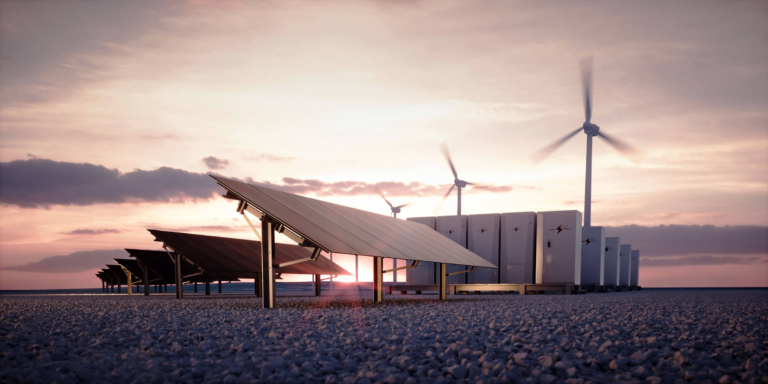
Energy storage technologies such as electro-chemical batteries and hydrogen fuel cells are some of the most watched innovations in the world. As the world aggressively electrifies their transportation fleet and material resources for batteries start to become a bottleneck in the supply chain, keeping an eye on what is out there is worth a look. Here is an update of what is commercially available in a table format. This list is not exhaustive but it covers the most prominent types of market-ready batteries available and compares them together.
The top three considerations for batteries are:
- Energy density (Joules per kg and Joules per Liter)
- Cost per Wh (kilowatt hour)
- Lifespan (charge cycles)
Batteries are not the only way to store energy as other methods can be more appropriate. For example, for GWh/TWh of storage capacity coupling a system to a hydro-electric dam or pumped hydro may be the optimal choice but it is only useful on very large-scale applications. Alternatively, flywheels offer the potential for fast response and recovery of brownouts. These options are not covered in this piece.
The first and most popular battery for mobile and transportation applications are lithium batteries. There are multiple types of lithium technologies with varying degrees of performance.
The most commonly used lithium battery types to date are:
- Lithium manganese-oxide battery (LiMn2O2) which are used in power tools as it has high energy density but a low life,
- Lithium Nickel Manganese Cobalt Oxide (LiNiCoMnO2) is commonly used in ebikes, power tools and electric cars
- Lithium Iron Phosphate (FeLiO4P) is commonly used in smaller applications like tablets and phones.
Much of this information is available on the internet but I also sourced some harder to access datasheets and an IEEE Power and Energy issue on storage technology. Another option, but for microscale and low voltage applications, is to use supercapacitors (15 Wh/kg). They carry the advantage of having a small package with a long lifespan but with the drawback of being about 5 to 10 times lower energy density than lithium. There are recent innovations that are using graphene hybrid material with lab results reporting 73 Wh/kg, competing with nickel metal hydride batteries, however these are not available on the market yet.
Hydrogen fuel cells are becoming a strong competitor for mobile applications. They boast a whopping energy density of up to 8,000 Wh/kg! However, the problem is compressing hydrogen, the world’s smallest element, into a reasonably sized tank. When that is complete, the efficiency drops to 25%-35% and hydrogen is only slightly better performing from a volumetric point-of-view as compared to lithium technology though it scales well while lithium batteries do not. Hydrogen fuel cells are best applied with large systems such as buses, trains, and some cars. There is currently limited infrastructure available for hydrogen refills which further limits its proliferation into the consumer market, whereas chemical batteries can easily have home-based charging stations installed.
Below is a table that summarizes all these technologies so that you can compare them. This is a snapshot of 2021 technology and it may change over the next few years. For mobile applications, lithium batteries and hydrogen fuel cells remain the most promising and will likely continue to be used to date. Future opportunities lie in how to extend the energy density/volume and costs per watt-hour down while getting away from the increasing scarcity of some elements like Cobalt.
Fig 1: Battery Technology Comparison in a Table Format
| Battery Type | |||||||
| Lead Acid | NiCd | NiMH | Li-Ion | NaS | H2 PEM Fuel Cell | VRB | |
| Common Name | Lead Acid | Nickel Cadmium | Nickel Metal Hydride | Lithium Ion | Sodium Sulfur | PEM Hydrogen Fuel Cell | Vanadium Redox Flow Battery |
| Energy Density (Wh/kg) | 25-50 | 25-90 | 60-120 | 75-200 | 150-240 | 5,000 – 8,000 | 10-30 |
| Power Density (W/kg) | 75-300 | 150 | 250-1,000 | 500-2,000 | 150-230 | 1,600 – 5,800 | 80-150 |
| Energy Volume (Wh/l) | 25-75 | 75-175 | 100-300 | 250-375 | 350 | 650 | 15-25 |
| Capital Cost ($US/kWh) | 100-300 | 800-1,500 | 900-3,500 | 300-2,500 | 300-500 | N/A | 150-1,000 |
| Round Trip Efficiency (%) | 75%-85% | 70%-90% | 65% | 85%-97% | 75%-90% | 25%-35% | 75%-90% |
| Self Discharge (%/month) | 5% | 20% | 30% | 5% | Negligible | Negligible | Negligible |
| In use since | 1800’s | 1950 | 1990 | 1991 | 1970 | 1939 | 1986 |
| Charge Cycles | 400 | 2,000 | 1,500 | 2,000 | 1,500 | 10,000 | |
There is plenty of research going on with graphene, hydrogen, and other methods. I am truly excited for what the future holds. For more insight into hydrogen versus lithium cars check-out this video.





